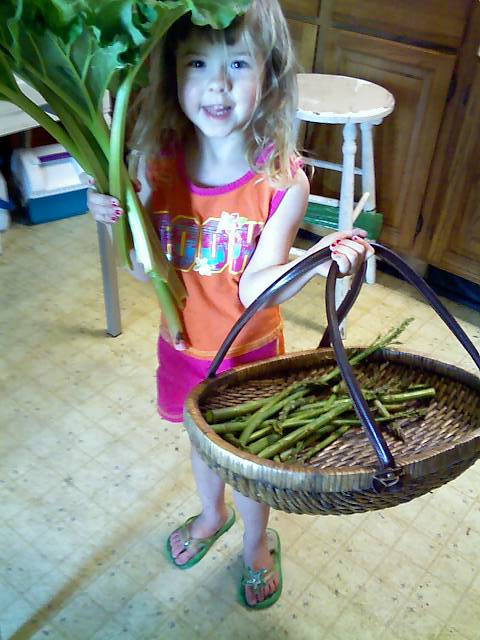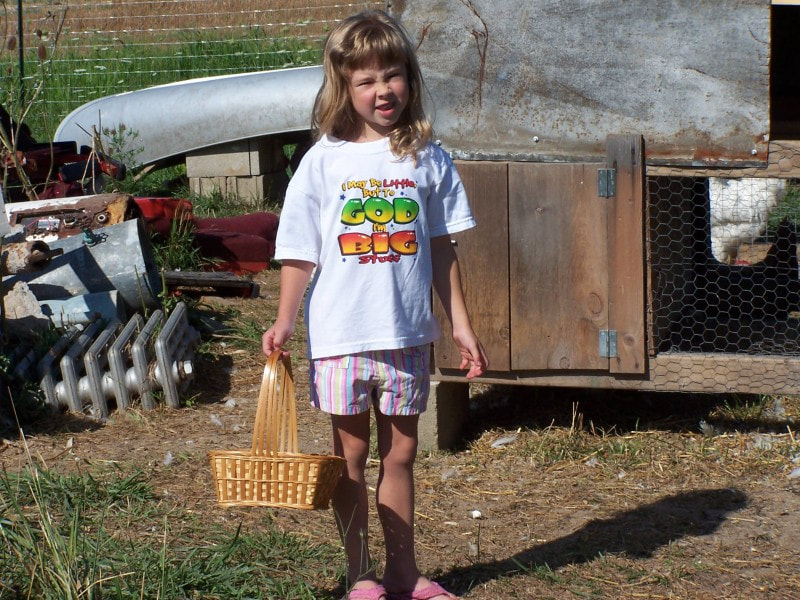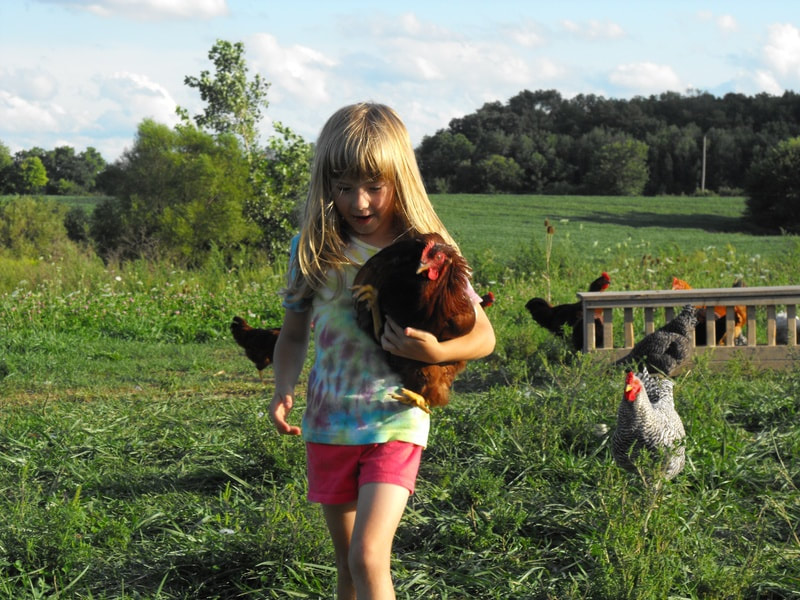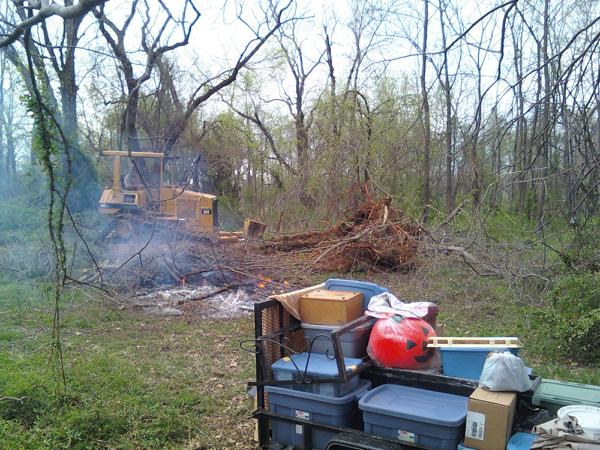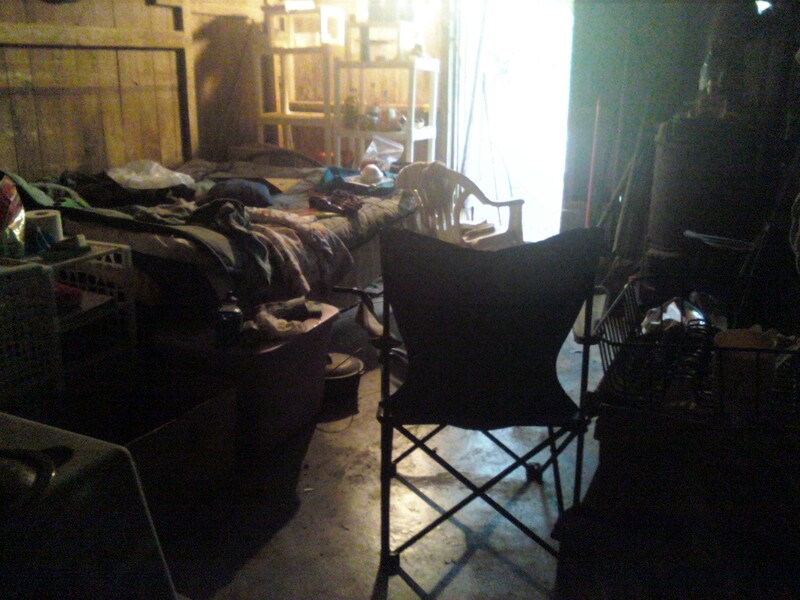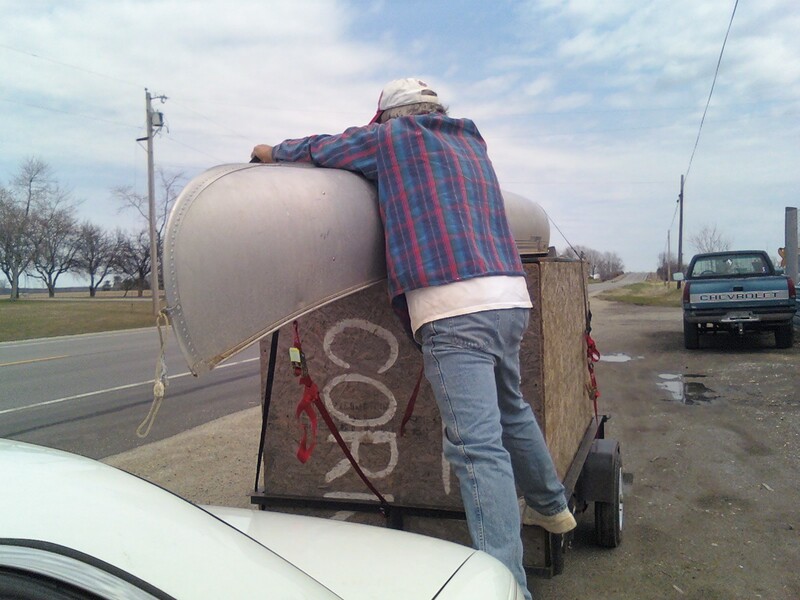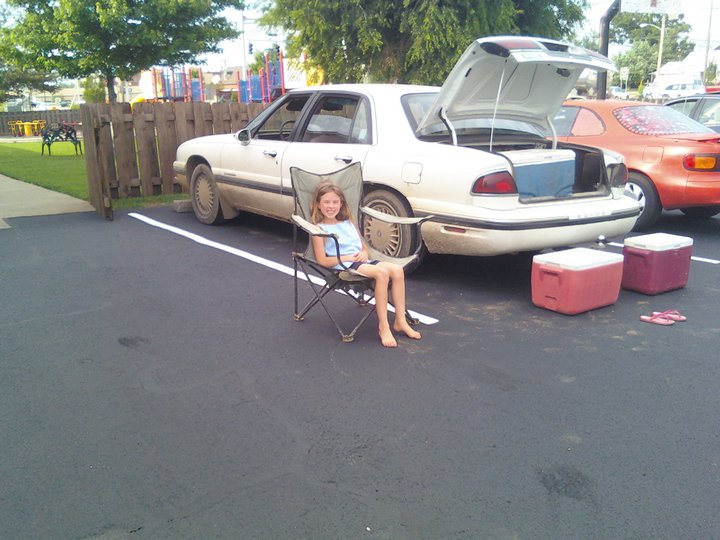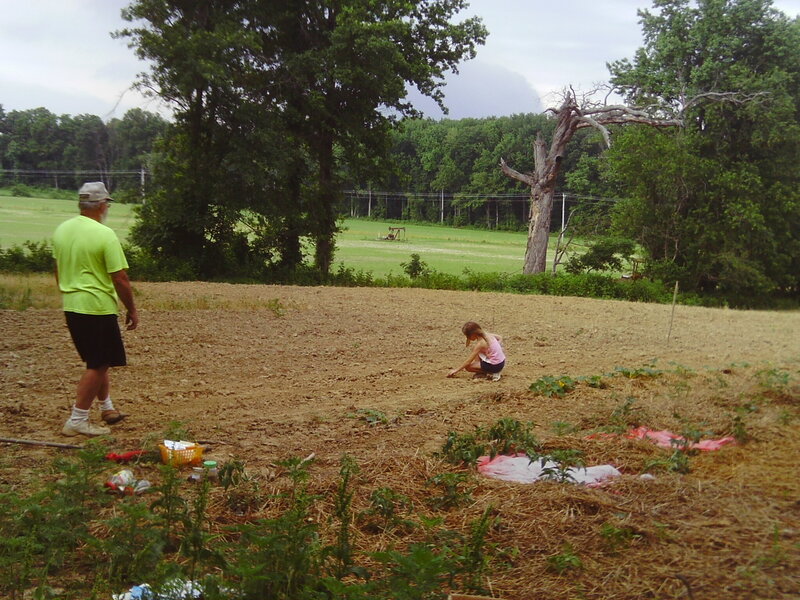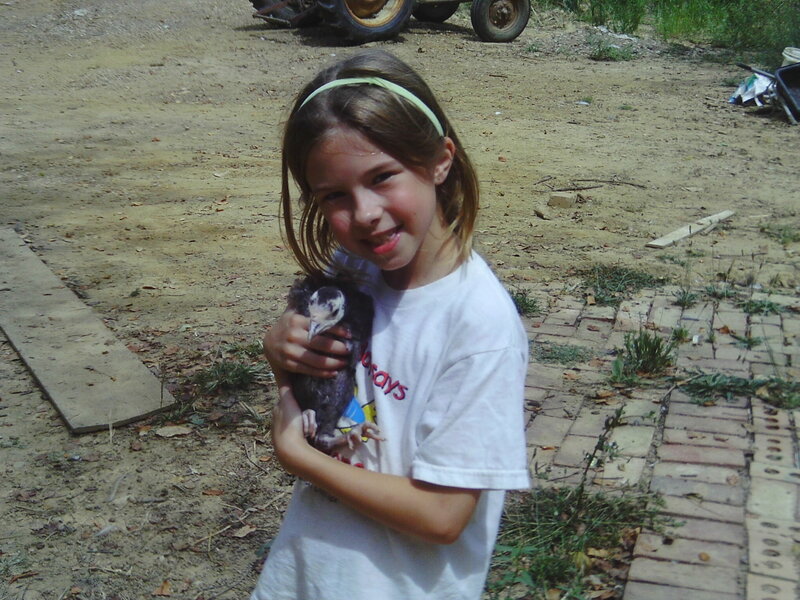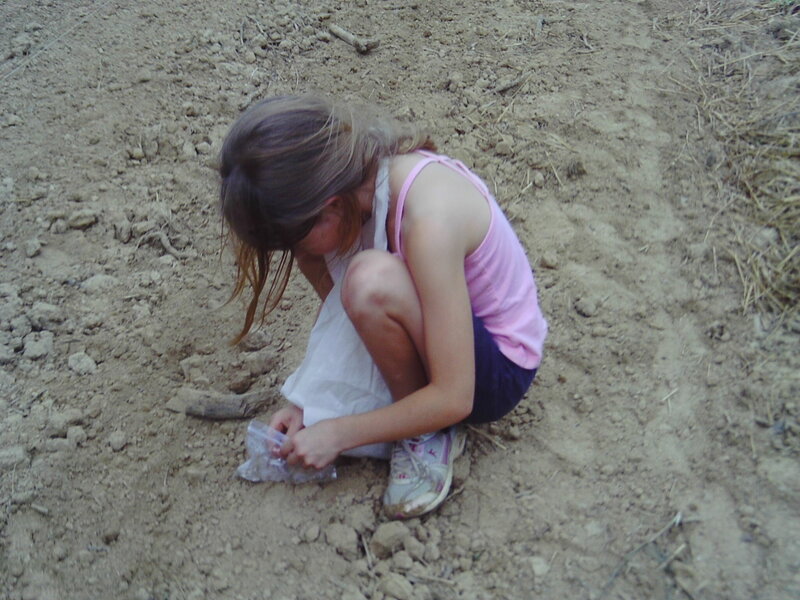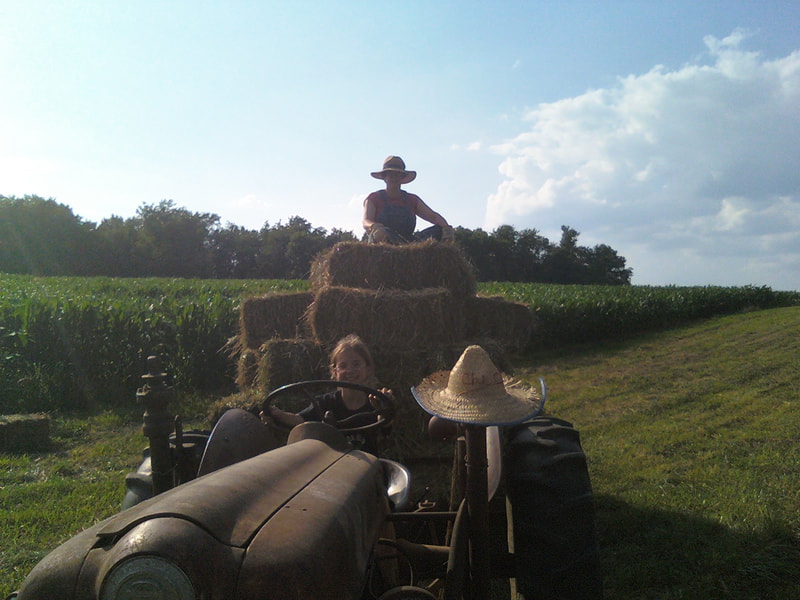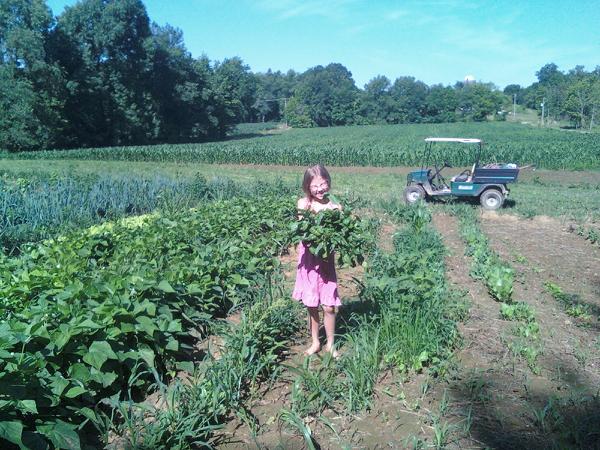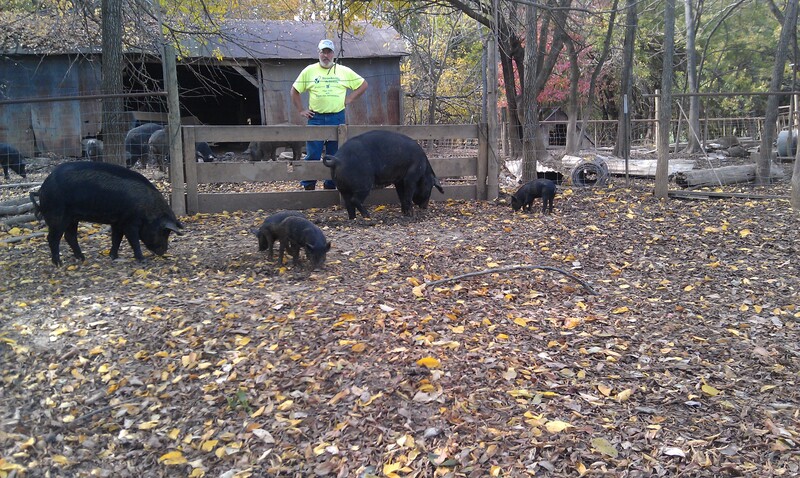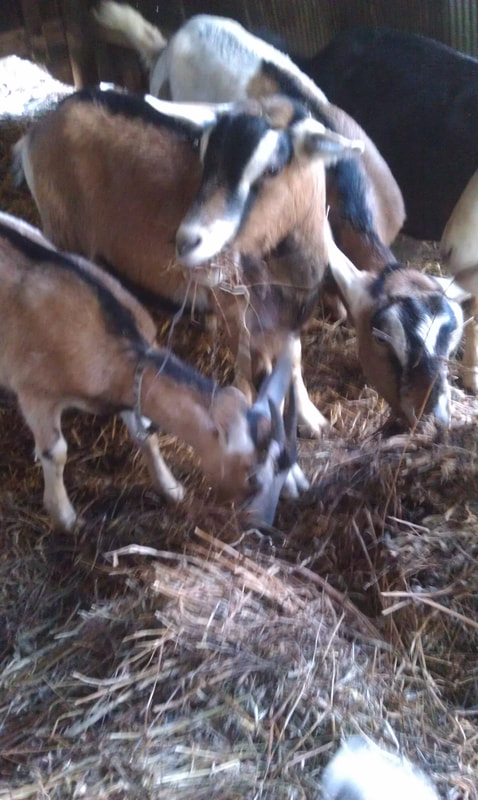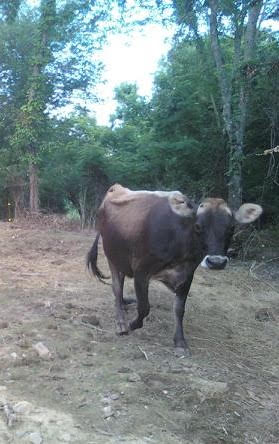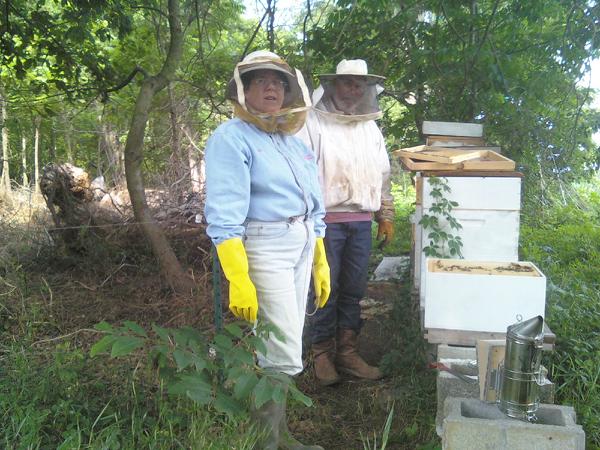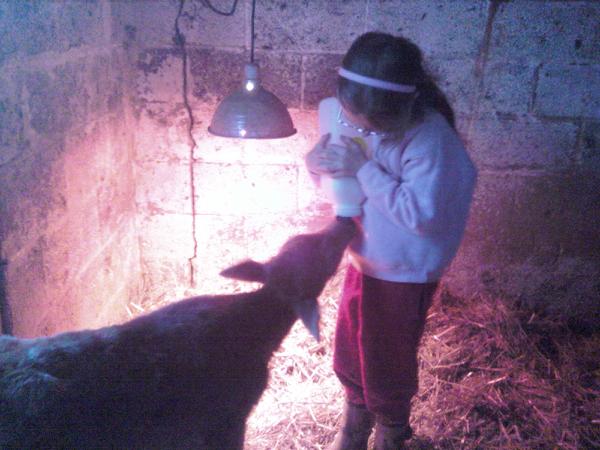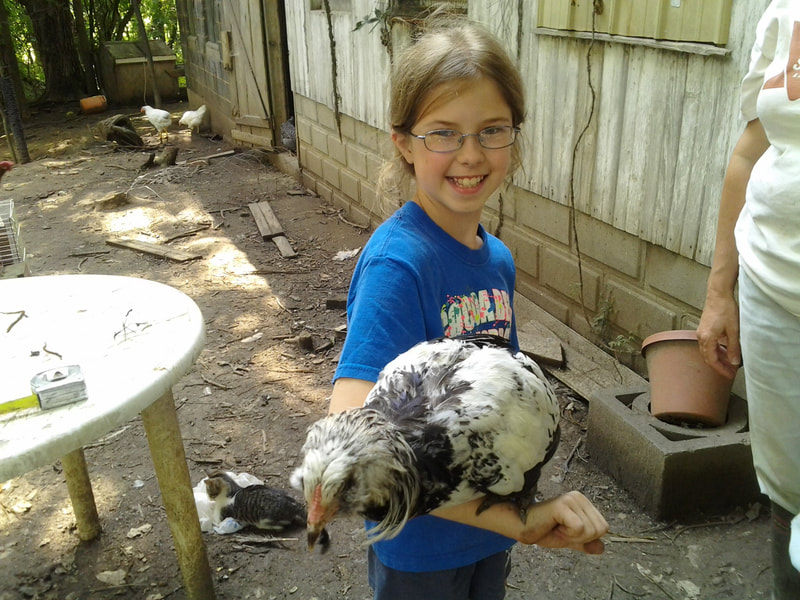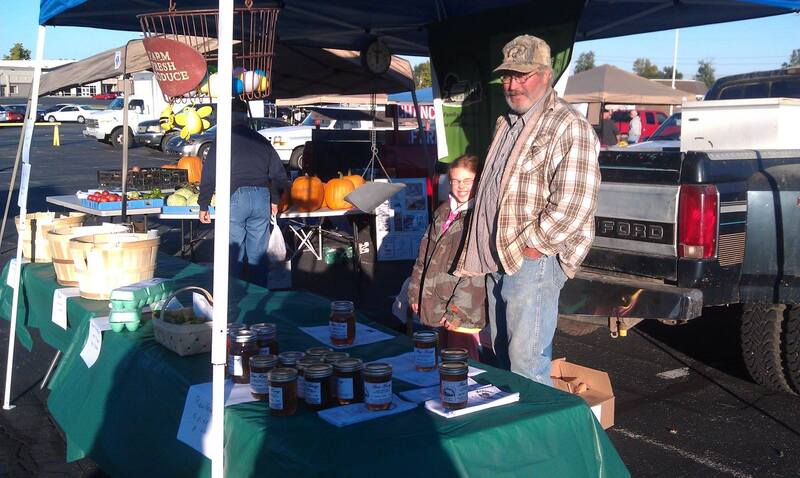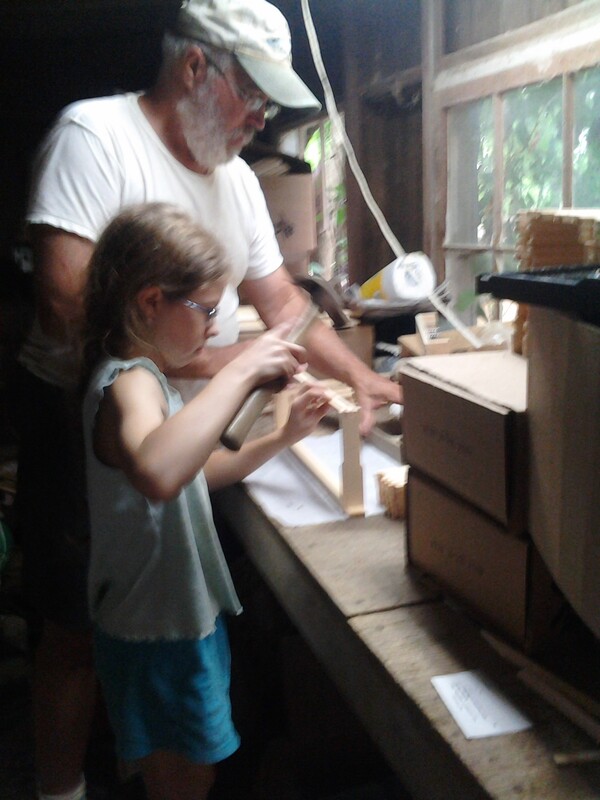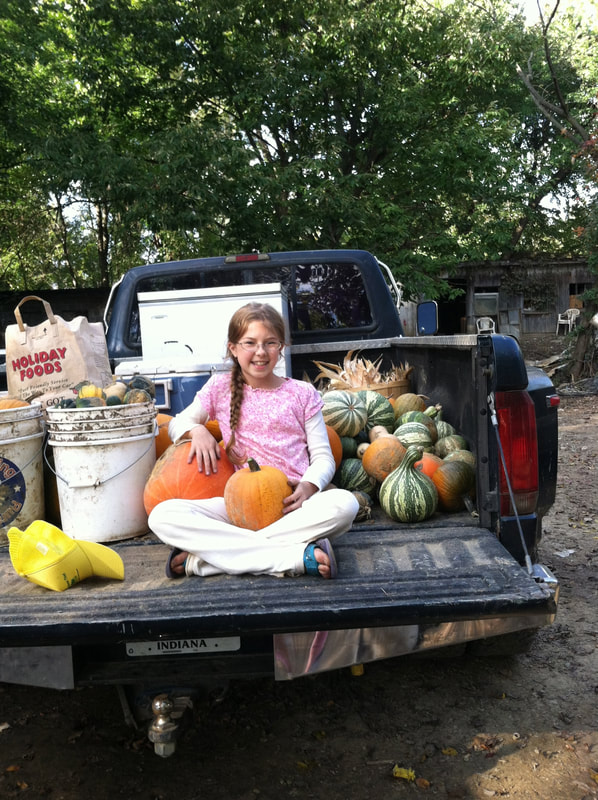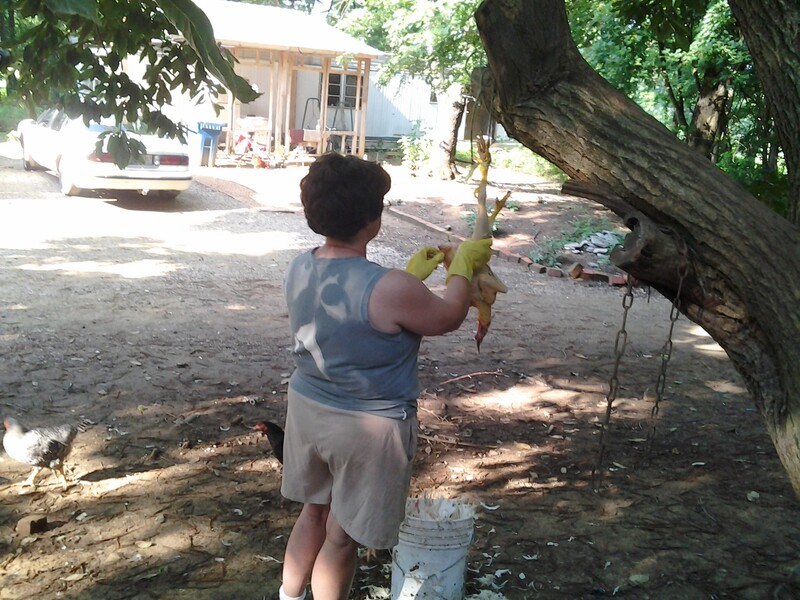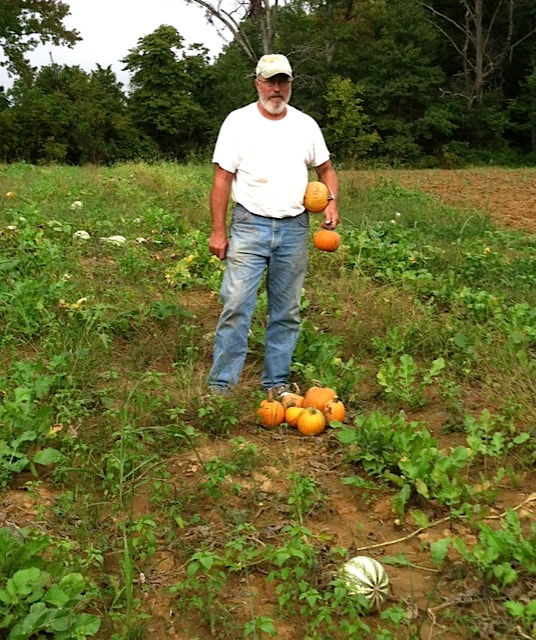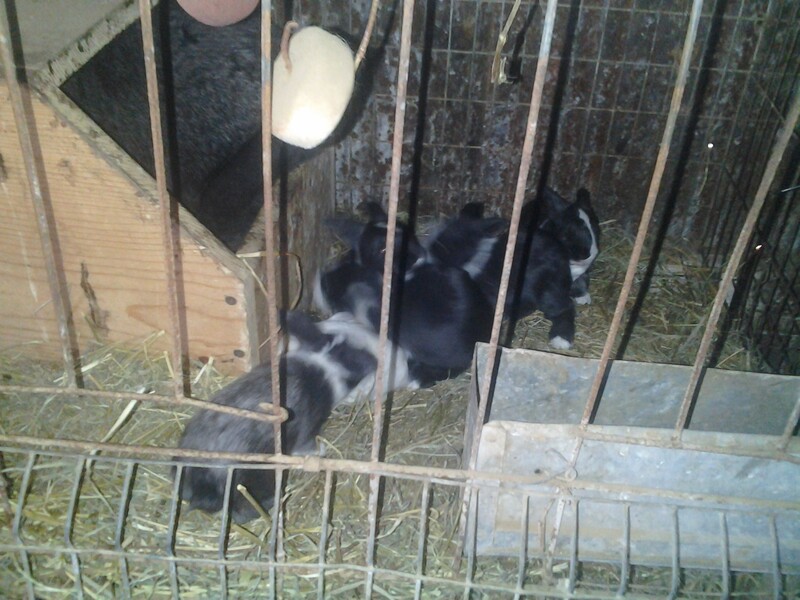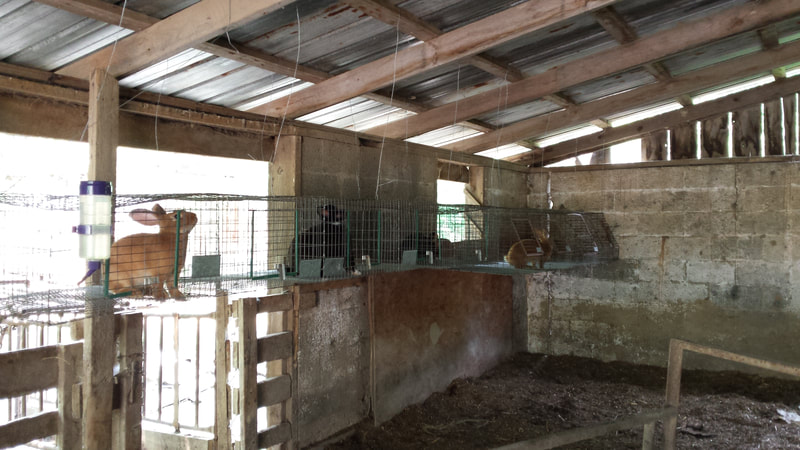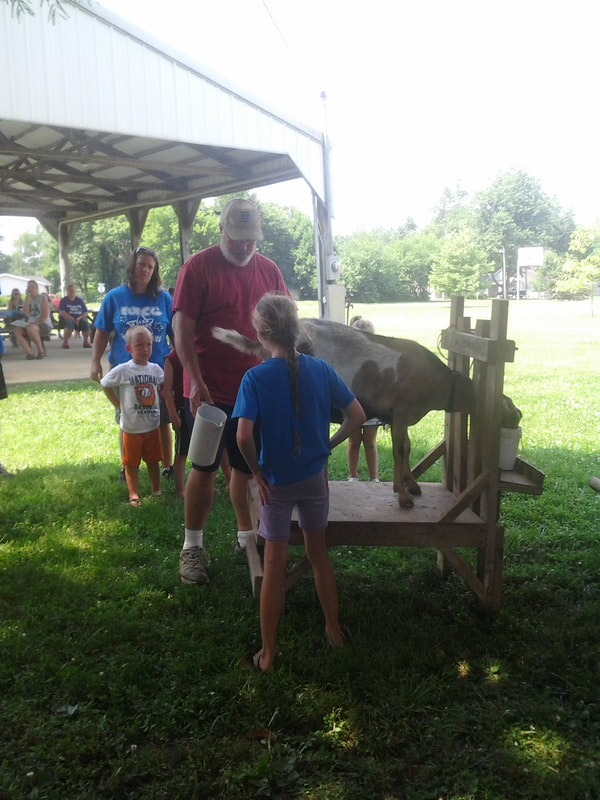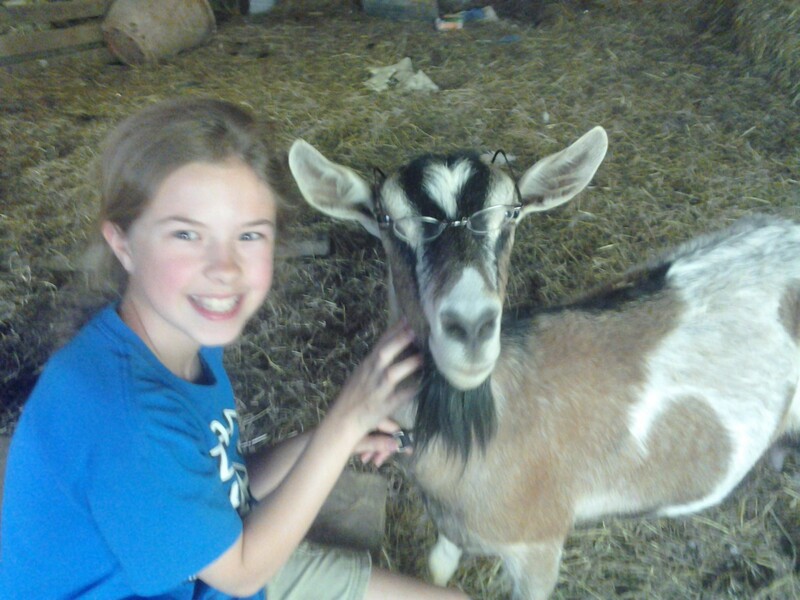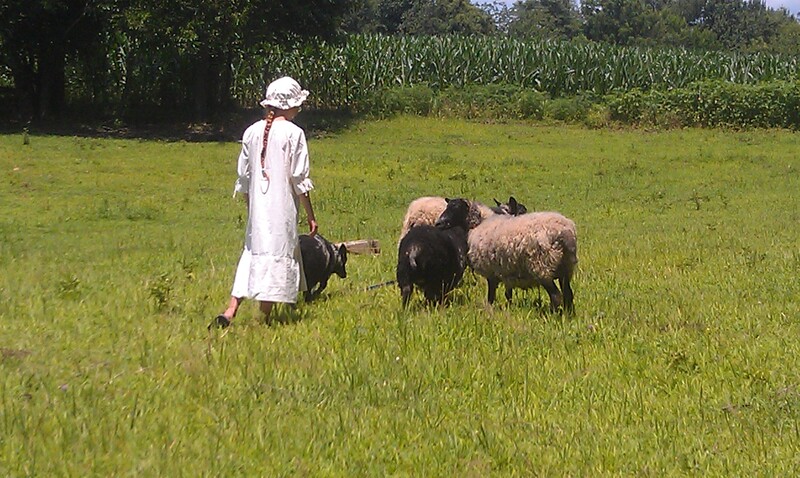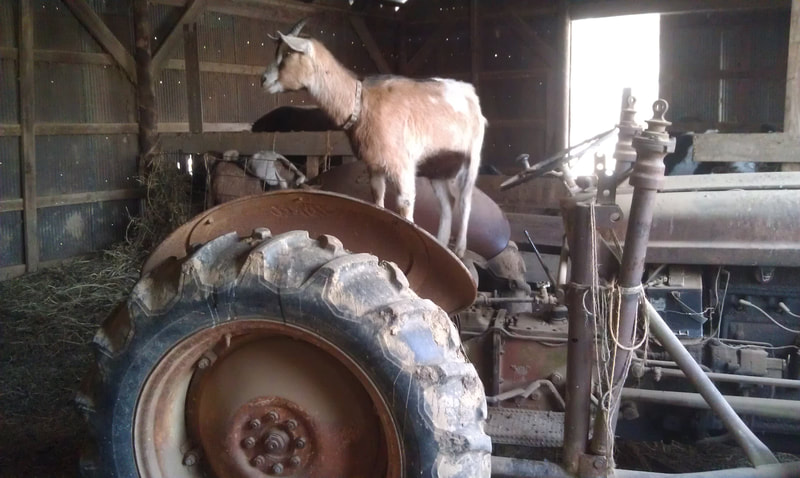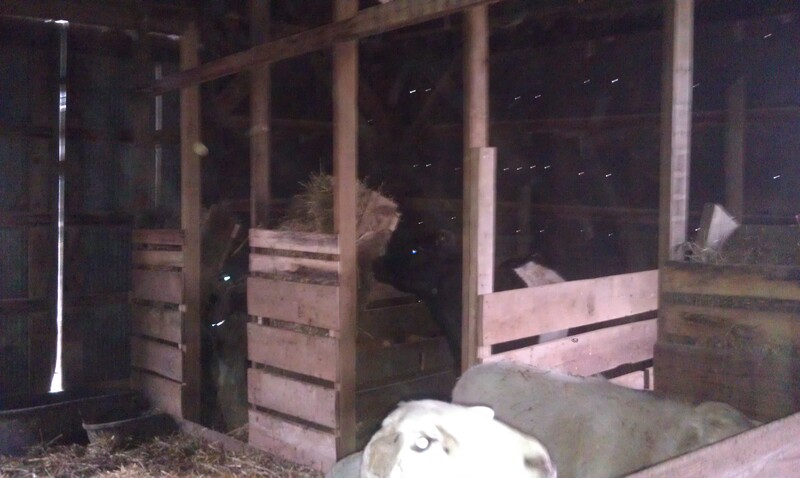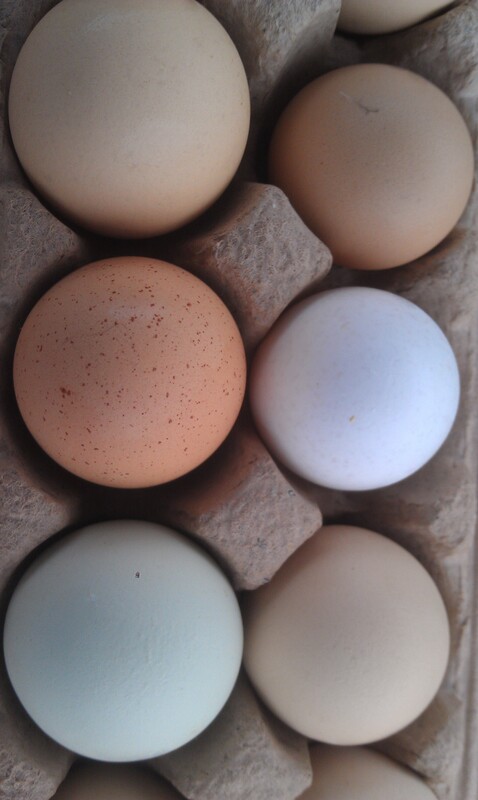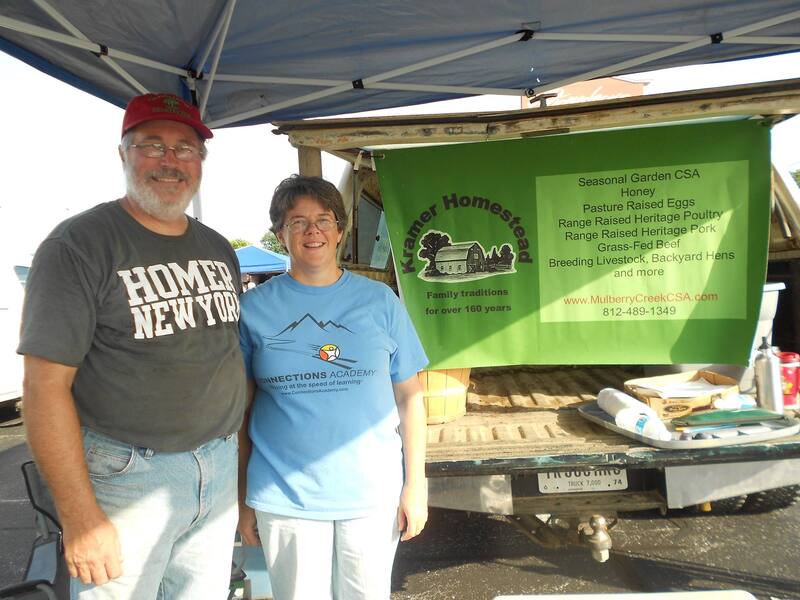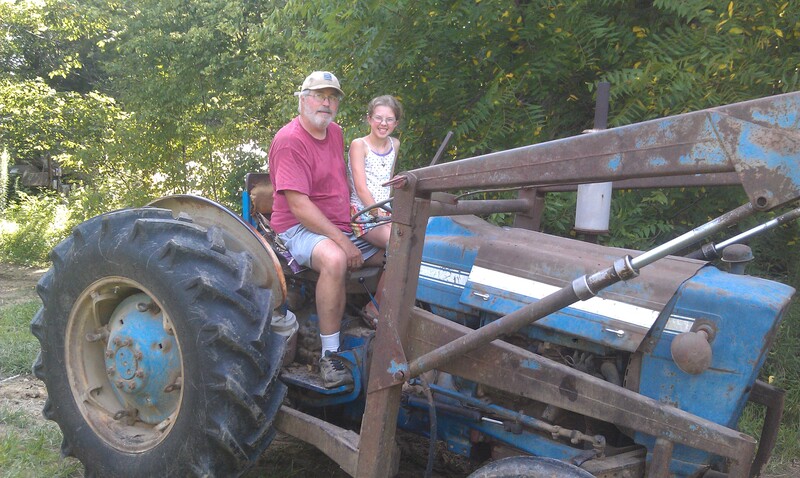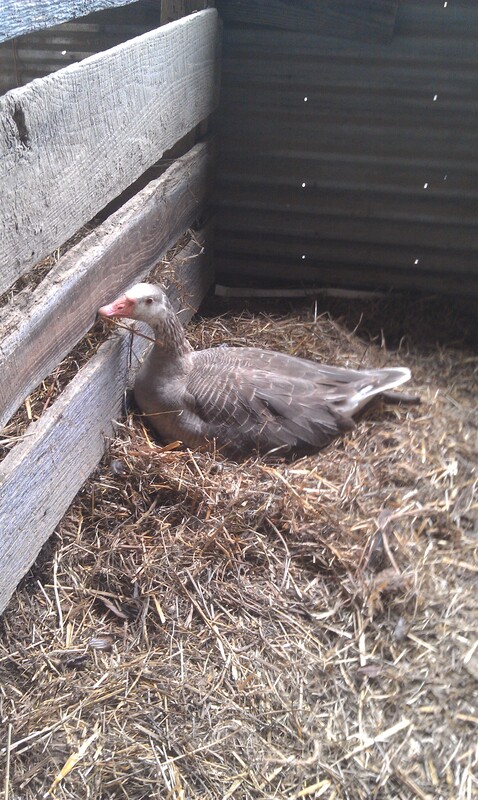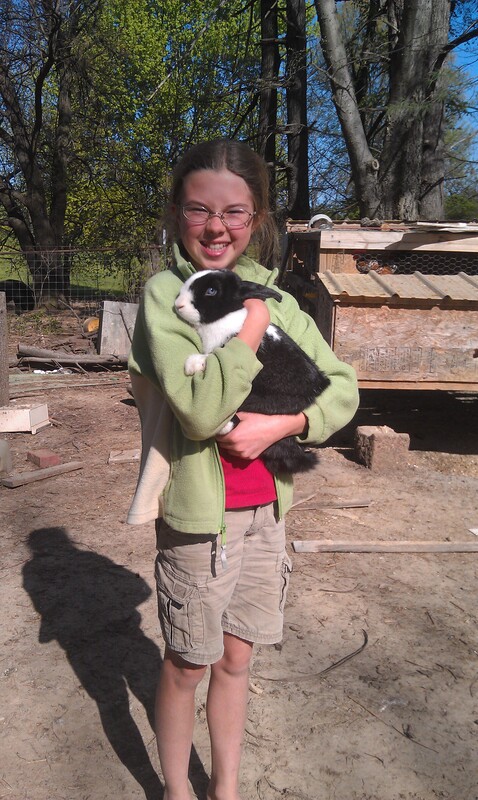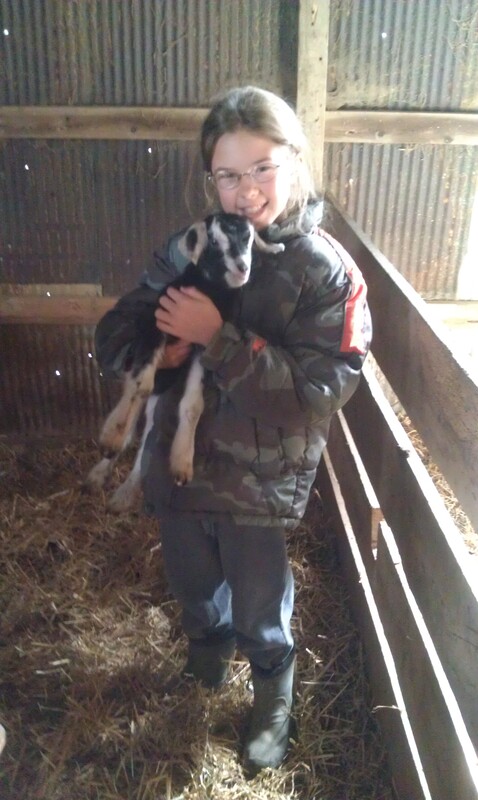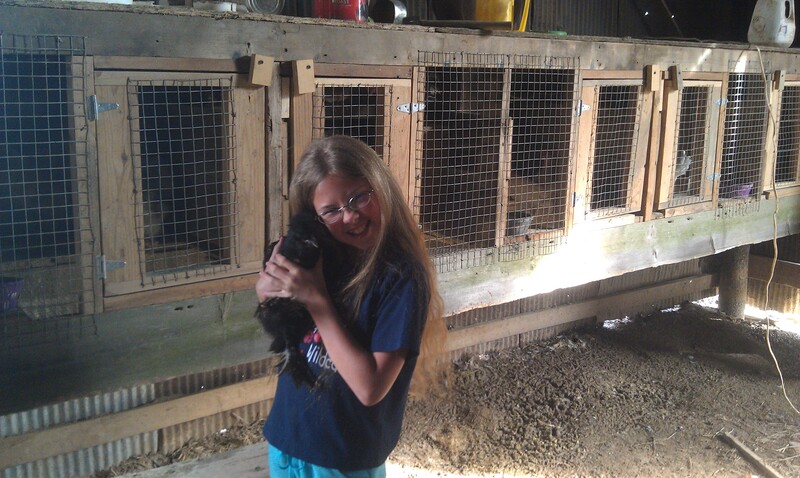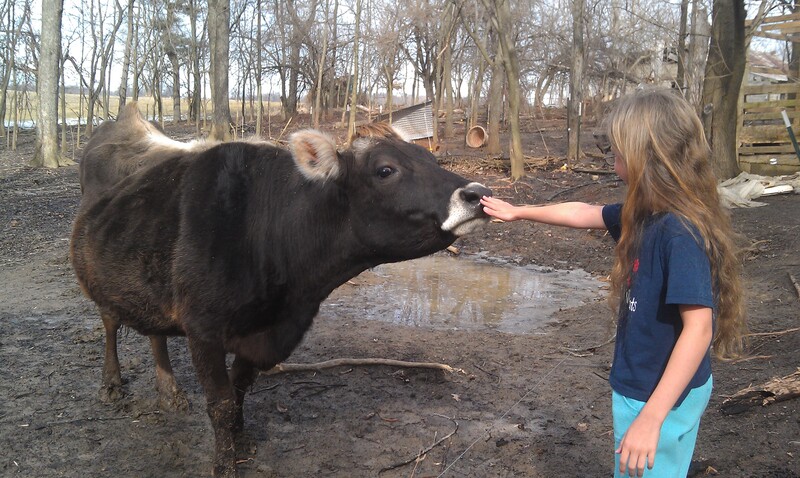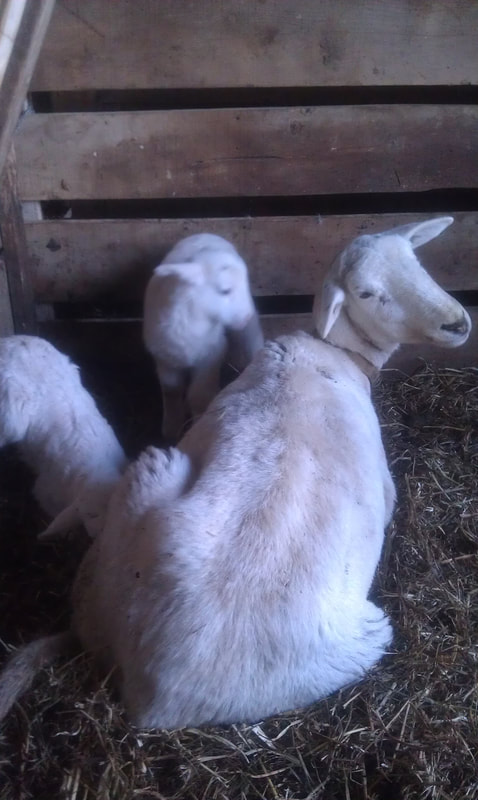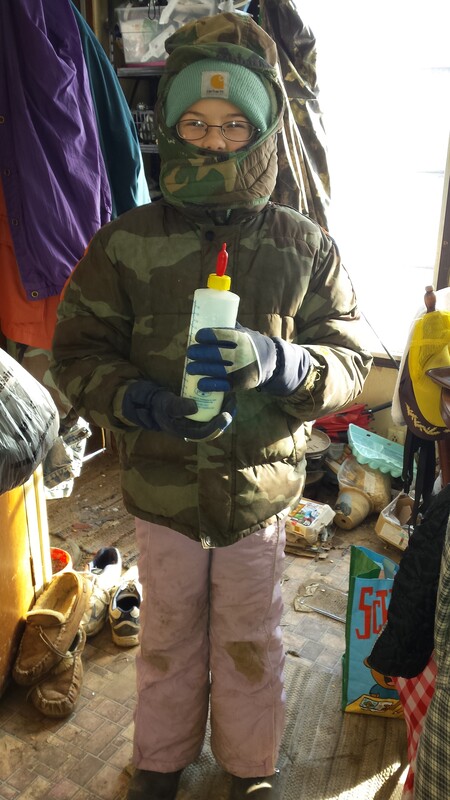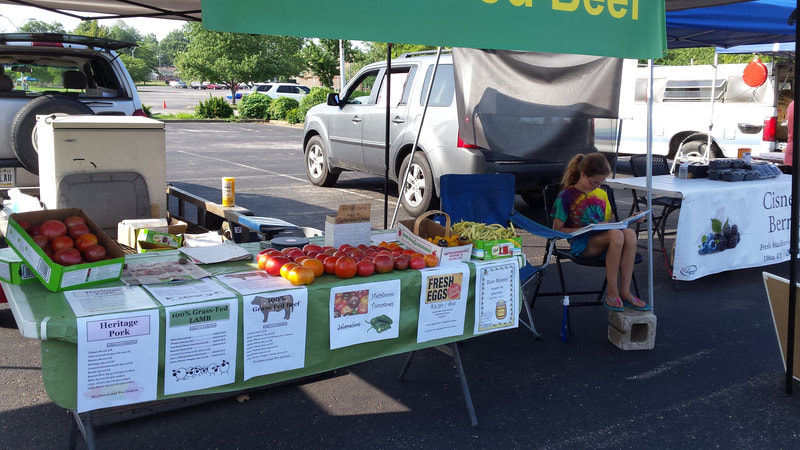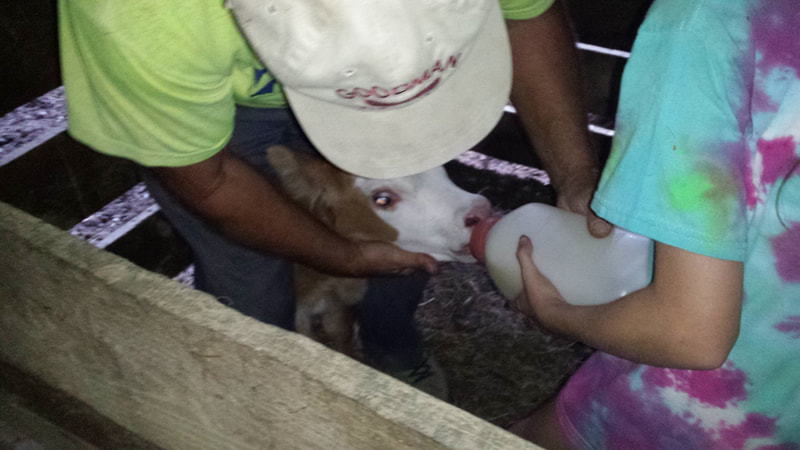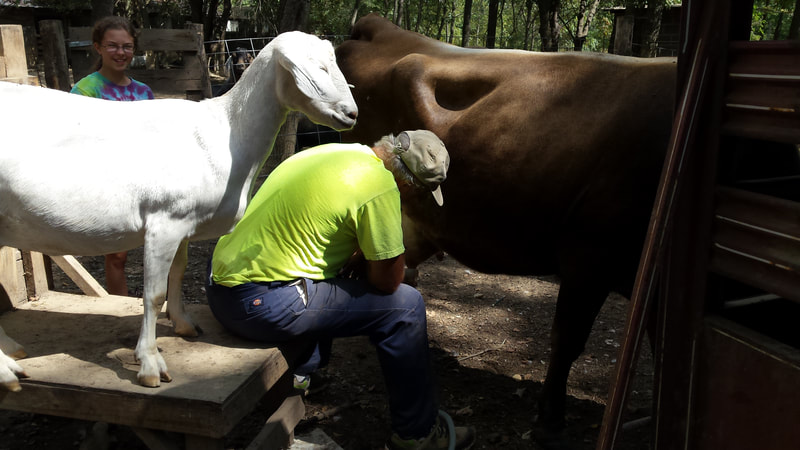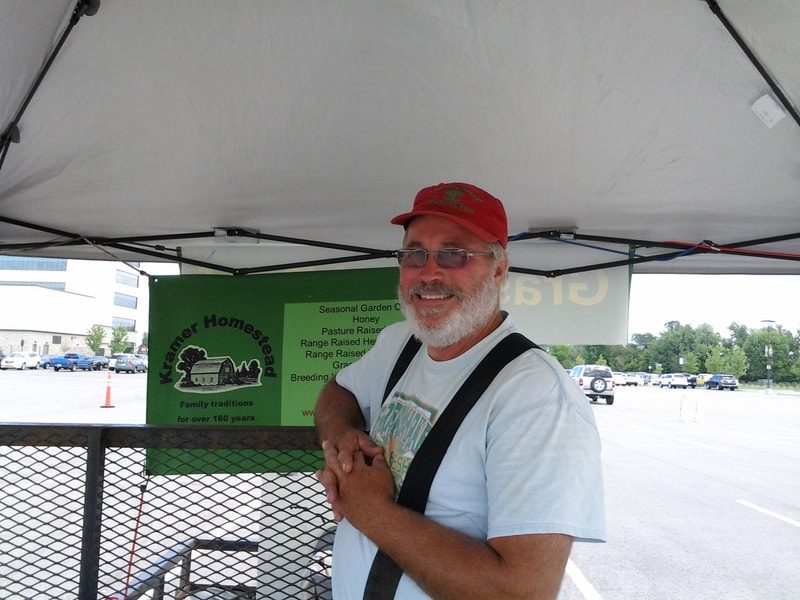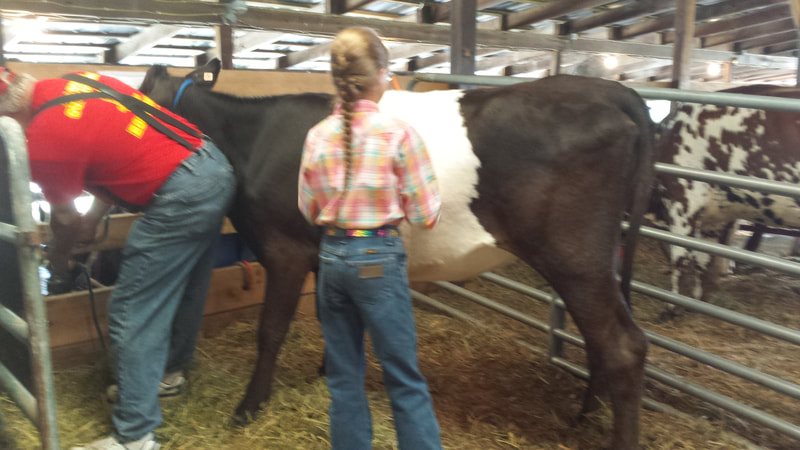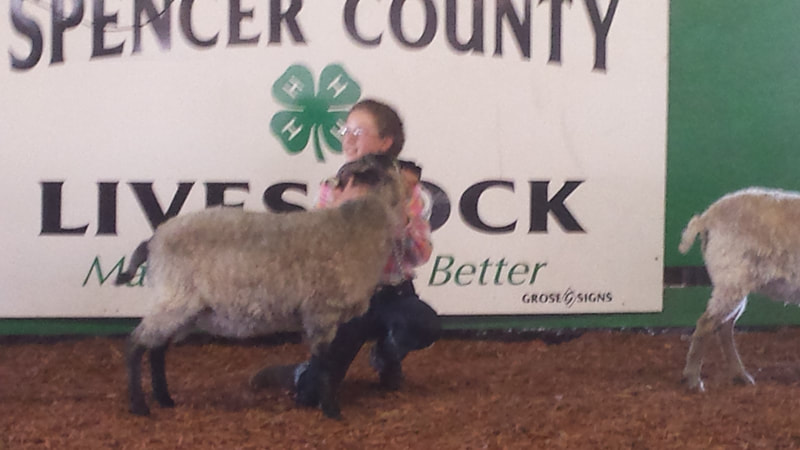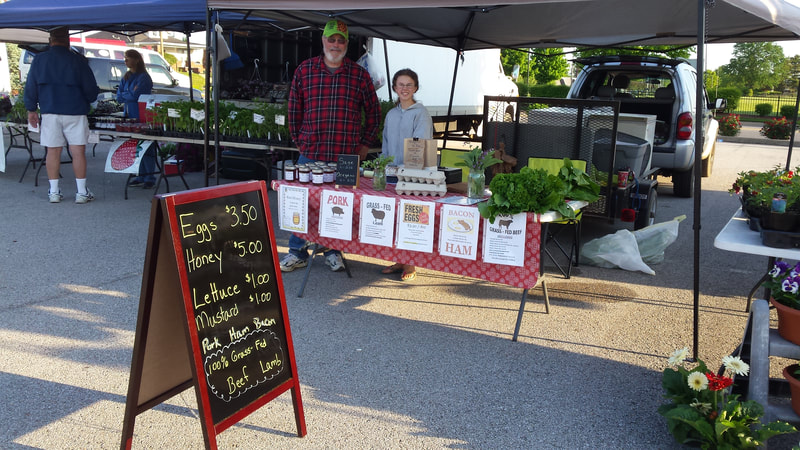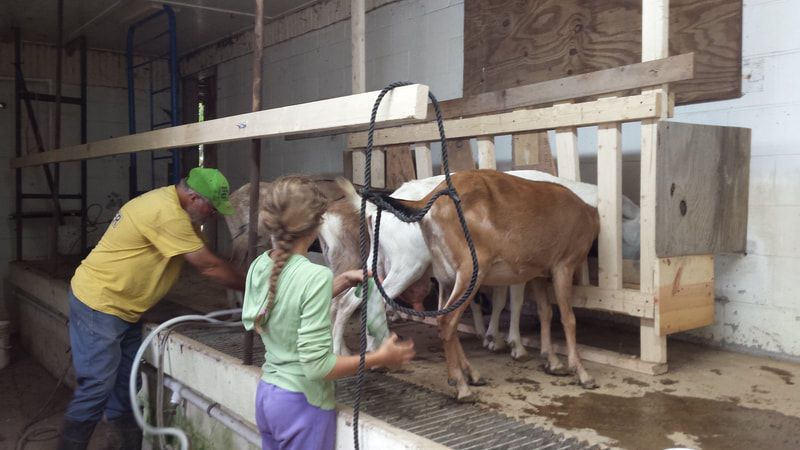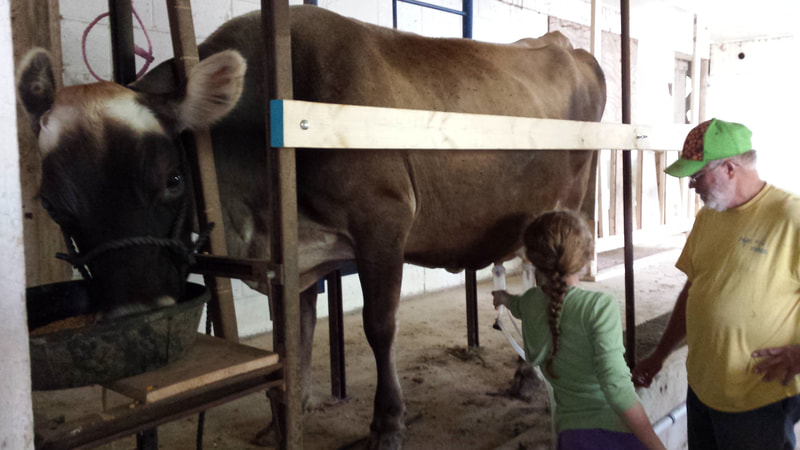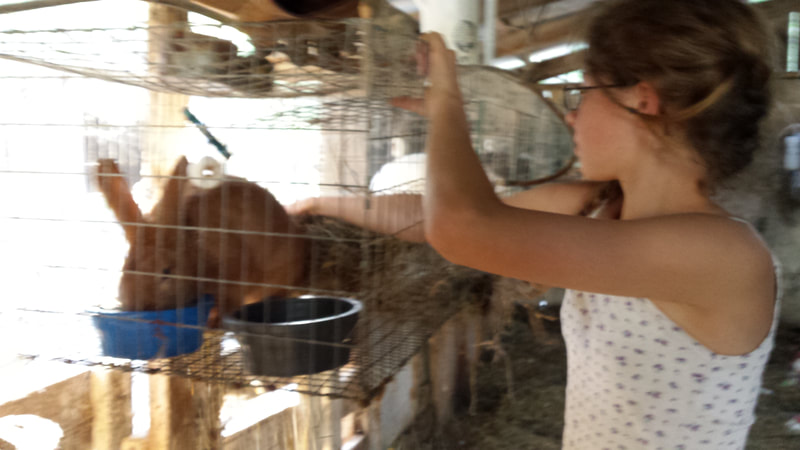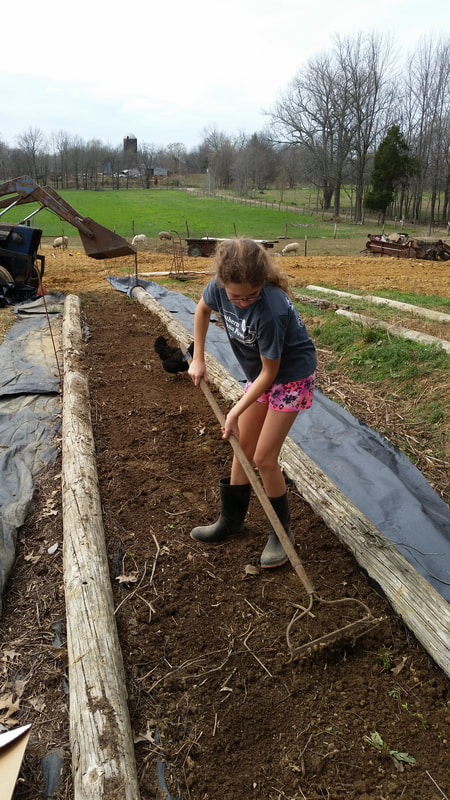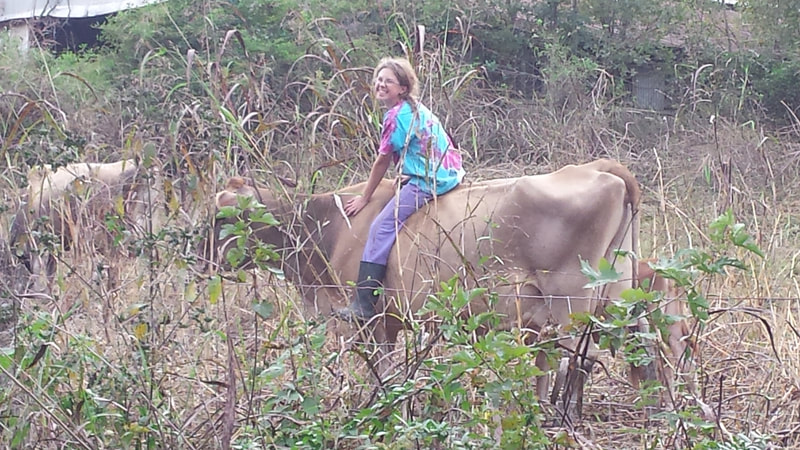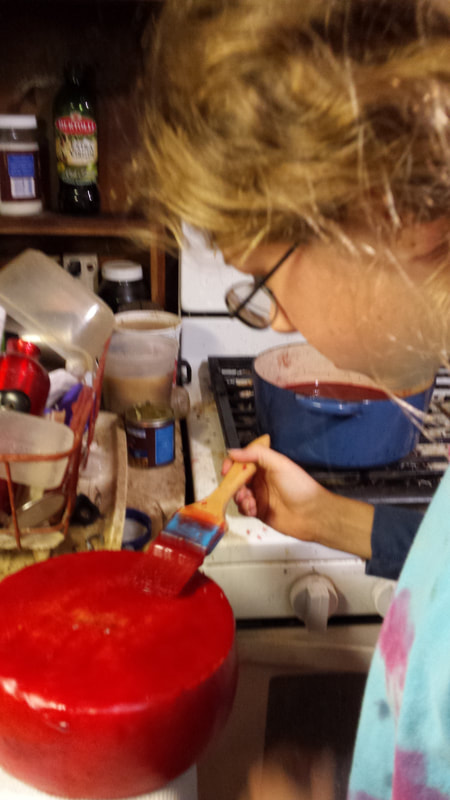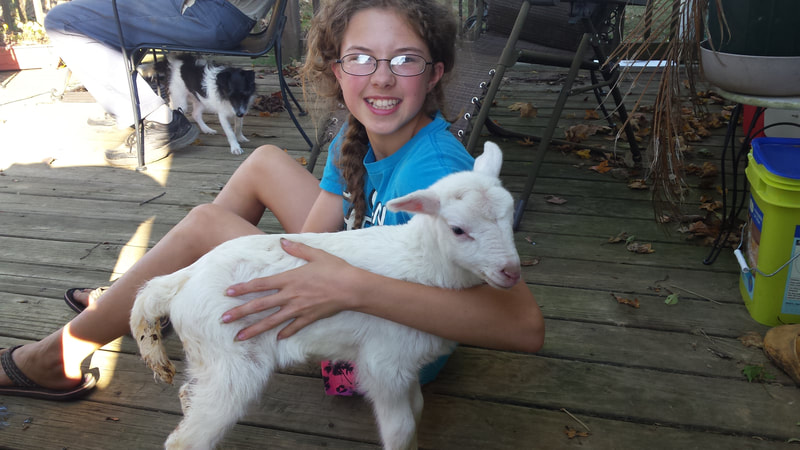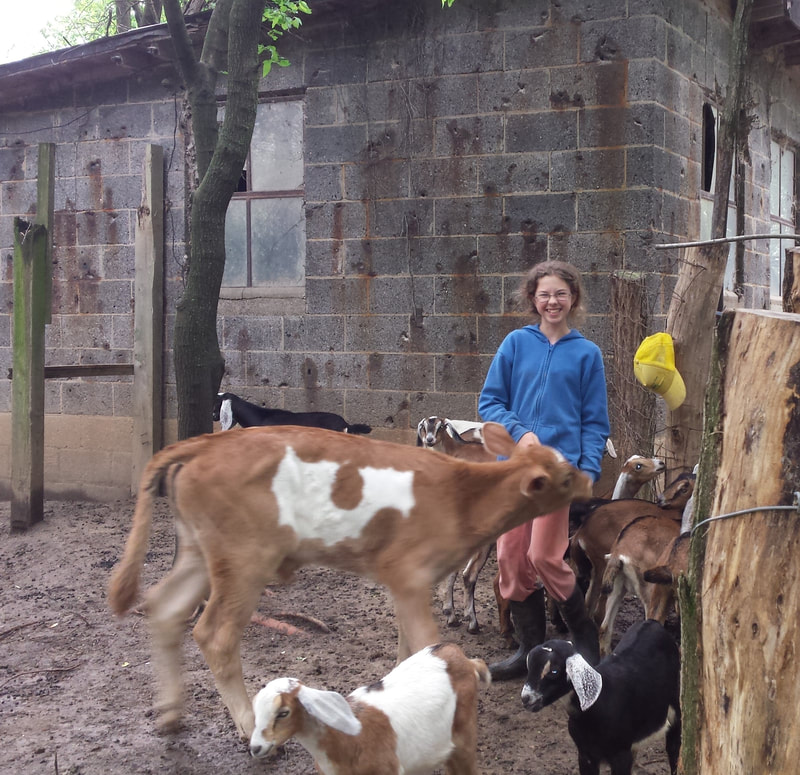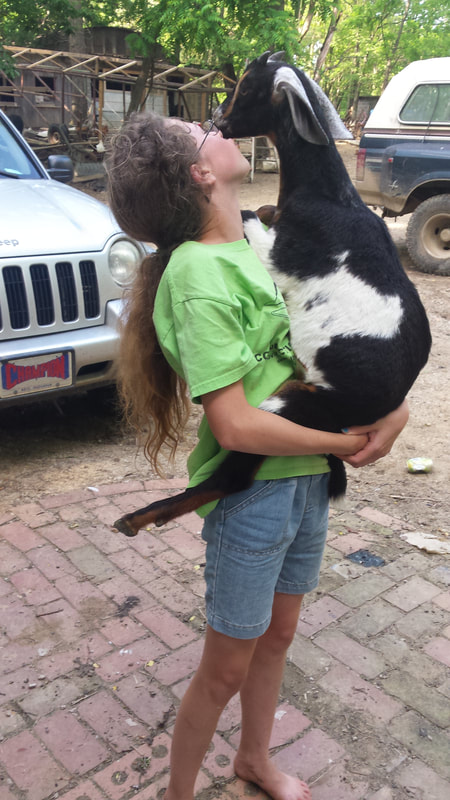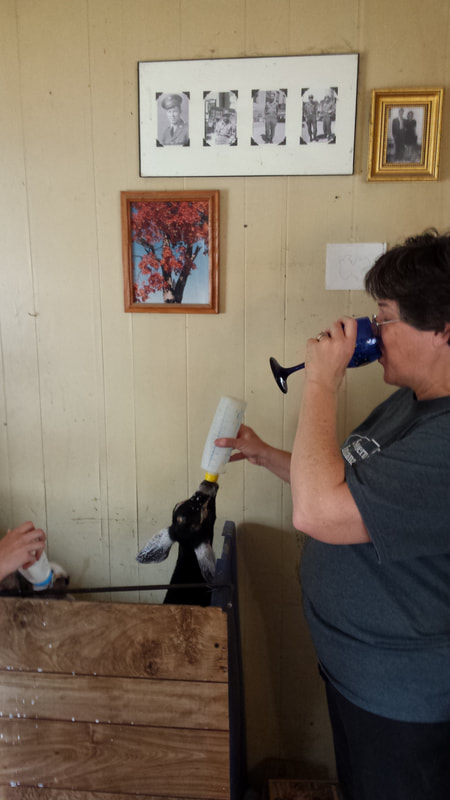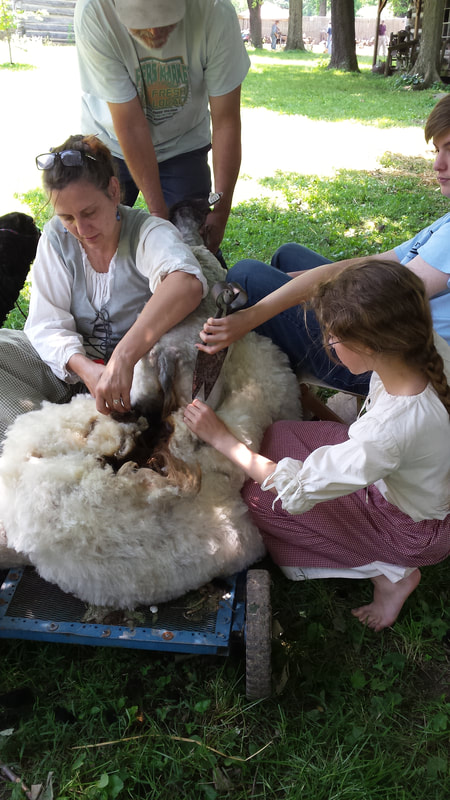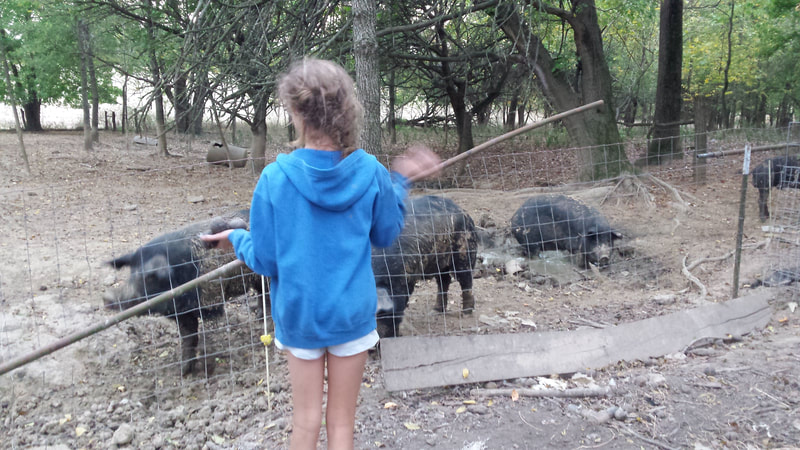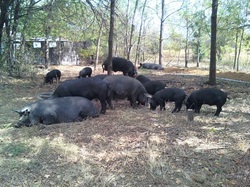The Story of Maggie's Farm at Mulberry Creek

Glenn grew up on a dairy farm in Southwest Indiana and has been growing things his entire life. Our interest in CSA evolved over time. We've always gardened both out of enjoyment and as a way to improve our grocery bill. Over the first several years we were together, we regularly added to our garden in a concerted interest in healthier eating. It's great knowing where our food originates! With these combined interests, we found ourselves growing more and more produce and varieties every year.
In 2008 when we were living near Dayton, Ohio, we found that we had enough to fill our pantry for the winter and still had lots left over to share. We also found that there was a market among our friends and acquaintances for fresh produce. We'd try to give produce away, they'd insist on paying us for it. Then Gail's brother, who lives in New England where CSAs first started, mentioned one day that we ought to look into a CSA. So we did! After learning as much as we could about CSA's, we decided to take the next step and move toward an actual plan toward supporting our community as well as ourselves through this shared endeavor.
We were a brand new CSA in 2009 in NW Montgomery County, Ohio, near Dayton. It was a great year and we learned a lot about operating a CSA, marketing the idea in general and our CSA in particular, and growing items we hadn't grown. We also got to meet some great folks!
In 2010 our shareholders doubled - some of our former shareholders came back, some switched to other CSAs that fit them better, and a few decided that CSA wasn't for them, and we got to know a whole bunch of new folks. But then personal issues forced us to make the very difficult choice (for us and many of our shareholders) to move the farm, lock, stock, barrel, pigs, and poultry, back to Glenn's family farm in Southwest Indiana
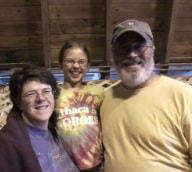
2011 felt like starting all over and, in many ways, we were. We had to find a new market, we had to adapt fields that had been row-crop farmed conventionally for decades into sustainable vegetable gardens, and we had to carve a home for ourselves and our livestock out of a wilderness of a homestead that had been abandoned for over 2 decades. We learned that there is a much larger market in the area for local, sustainably raised heritage meat and eggs and heirloom veggies than we expected and we made some great new friends. Since that time, we've enjoyed a long experiment in a variety of directions.
2012: After a particularly disappointing partnership with another farmer in who was to take on and run with the CSA operation, we ceased the vegetable CSA but we became active Saturday vendors at the Owensboro Regional Farmers Market.
We had been a part of a cow-dairy herd share to have awesome raw milk. Our farmer, Rose Hill Dairy, was looking for a home for a family cow and we purchased our first cow that year.
The same year, we added four dairy goats to the farm and our dairy goat herd has grown quite a lot since then. We later offered goat herd shares and chevon (goat meat) as available.
We also purchased a Katahdin (hair sheep) ewe and two whethers for our own personal use. After having repeated requests for lamb at the farmers market, we began developing that herd and began offering lamb with increased regularity, because the demand has been very high.
We had been a part of a cow-dairy herd share to have awesome raw milk. Our farmer, Rose Hill Dairy, was looking for a home for a family cow and we purchased our first cow that year.
The same year, we added four dairy goats to the farm and our dairy goat herd has grown quite a lot since then. We later offered goat herd shares and chevon (goat meat) as available.
We also purchased a Katahdin (hair sheep) ewe and two whethers for our own personal use. After having repeated requests for lamb at the farmers market, we began developing that herd and began offering lamb with increased regularity, because the demand has been very high.
2013: Our daughter wanted to try raising rabbits for meat so we purchased a trio of New Zealand rabbits for her. That experiment has had minimal success and is currently in a hiatus.
Maggie wanted her own calf for the 4H fair and we purchased a Dutch-Belted heifer from a nearby farmer. Since that time, our dairy cow herd has grown to 11 and we have a small market for cow herd shares. That year we also started experimenting with making cheeses and discovered how tasty cheese is that comes from our own cows and goats!
Maggie wanted her own calf for the 4H fair and we purchased a Dutch-Belted heifer from a nearby farmer. Since that time, our dairy cow herd has grown to 11 and we have a small market for cow herd shares. That year we also started experimenting with making cheeses and discovered how tasty cheese is that comes from our own cows and goats!
2014: Our various herds just grew, we built more fence, practiced making cheese, and were more present at the farmers market
2015: We added Shetland sheep to our flock so our daughter could have sheep that wouldn't knock her down to show at the county 4H fair. They also make tiny but amazingly tasty lamb chops
2016-17: These were more years of just keeping on keeping on, working on our herds and getting better at what we're doing. Our cow and goat herds had grown enough that, besides Maggie developing Popeye arms from hand milking, in 2016 we began to upgrade the old milk parlor and milking equipment, finally getting the milking operation fully up and running and able to handle all of our dairy animals with a good milk parlor. We also started the paperwork to become a Grade A dairy, which did not go through because we were too small for the state to have any interest in.
We erected a high-tunnel (unheated greenhouse) through a grant to both return to and extend vegetable production.
We erected a high-tunnel (unheated greenhouse) through a grant to both return to and extend vegetable production.
2018: By Spring 2018, we were in the process of significantly downsizing our hog population; had built a small market with goat and cow dairy herd-share; had increased lamb production; and had finished construction on the high-tunnel and begun producing. Our poultry and honey production has been up and down over the past few years, depending on the season, but we had developed a solid market for pasture raised yummy eggs and can sell all the honey the bees can give us, when we can get it away from them.
Typical of most farmers, we're always hopeful that production this year will be stellar, but we're also aware that life tends to toss monkey wrenches into the best laid plans. The motto of farming really is somewhere between "there's always next year" and "anything can happen"!
Since 2010, we lived and farmed on Glenn's family farm which is incorporated and owned by him and his three siblings. In Spring 2018, the farm was faced with a situation that caused us to have to seriously consider the future of our sustainable animal operation and Maggie's future. After a short but intense period of discernment, we made the, again, wrenching decision to relocate the farm.
In August 2018, we once again packed up everything: cows, goats, sheep, chickens, cats, tractors, and underwear, and hauled it all 1200 miles to Sagadahoc County, Maine, where we hope to spend many years making new friends, developing a new market, and building a new future.
Typical of most farmers, we're always hopeful that production this year will be stellar, but we're also aware that life tends to toss monkey wrenches into the best laid plans. The motto of farming really is somewhere between "there's always next year" and "anything can happen"!
Since 2010, we lived and farmed on Glenn's family farm which is incorporated and owned by him and his three siblings. In Spring 2018, the farm was faced with a situation that caused us to have to seriously consider the future of our sustainable animal operation and Maggie's future. After a short but intense period of discernment, we made the, again, wrenching decision to relocate the farm.
In August 2018, we once again packed up everything: cows, goats, sheep, chickens, cats, tractors, and underwear, and hauled it all 1200 miles to Sagadahoc County, Maine, where we hope to spend many years making new friends, developing a new market, and building a new future.
2020: We've been in Maine for a little over a year, and while everyone – both two and four footed – aren't yet adjusted to the new place and colder Maine winters, we're working on it. We've gotten our dairy license and are in production with a temporary cheese room in our basement until we're able to get the barn space fixed up for all cheese production things. The animals have safe and warm places to go at night – which is an absolute must here – and we've developed markets to sell our various products.
2022: We've been in Maine for a little over three years now and our market and farm has exploded. We're currently attending six different markets in the summer throughout the week and one winter market along with sales on the farm. We've begun doing baked goods as well as the dairy and meat. We've moved the creamery out of the temporary room in the basement to it's permanent location in the barn where we have the room we need to keep up with production of our animals. The old creamery in the basement has now been turned into a commercial kitchen where our baked goods are made.
We've become more accustomed to the Maine weather (although still not loving the long and cold Maine winters) and have been gardening here since the summer of 2020. While this is primarily for family use, we do occasionally sell vegetables at the farm stand.
We don't exactly know what's in store for us over our fourth summer here, but we do know that we'll keep working on fixing up the farm to make everything better and more productive as well as listening to the market and needs of the area to try and fill those as best as we can.
We've become more accustomed to the Maine weather (although still not loving the long and cold Maine winters) and have been gardening here since the summer of 2020. While this is primarily for family use, we do occasionally sell vegetables at the farm stand.
We don't exactly know what's in store for us over our fourth summer here, but we do know that we'll keep working on fixing up the farm to make everything better and more productive as well as listening to the market and needs of the area to try and fill those as best as we can.

